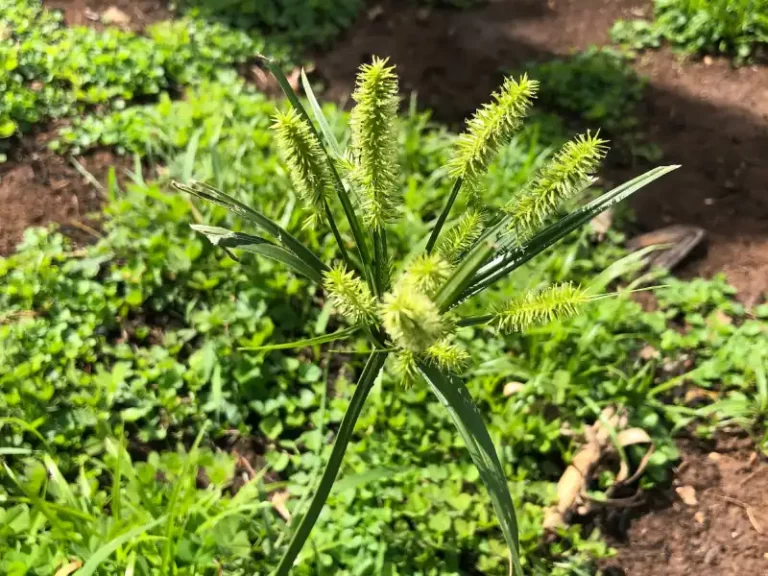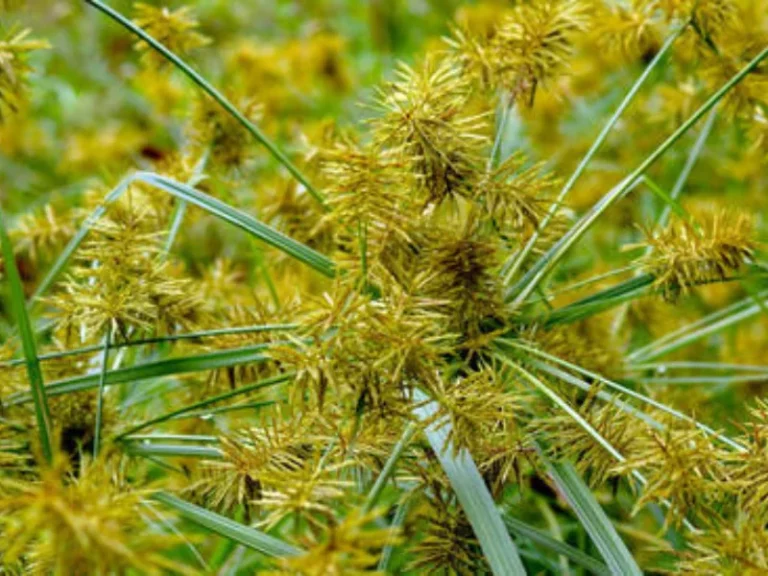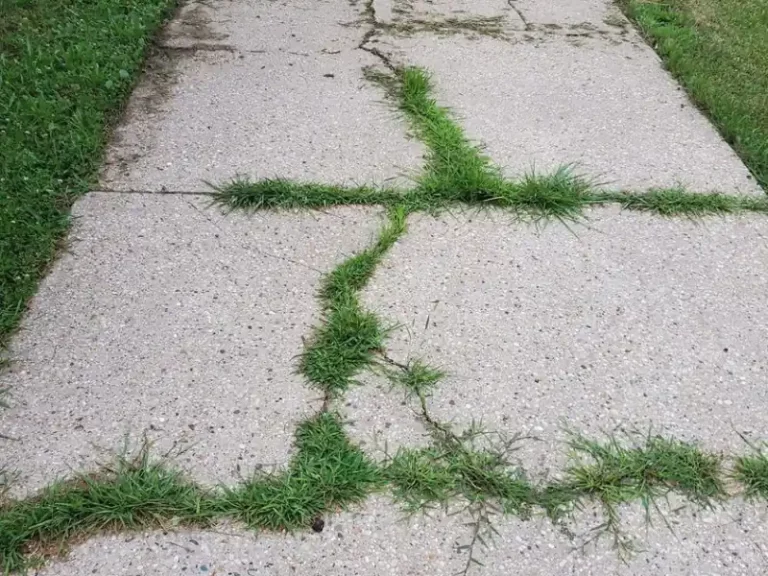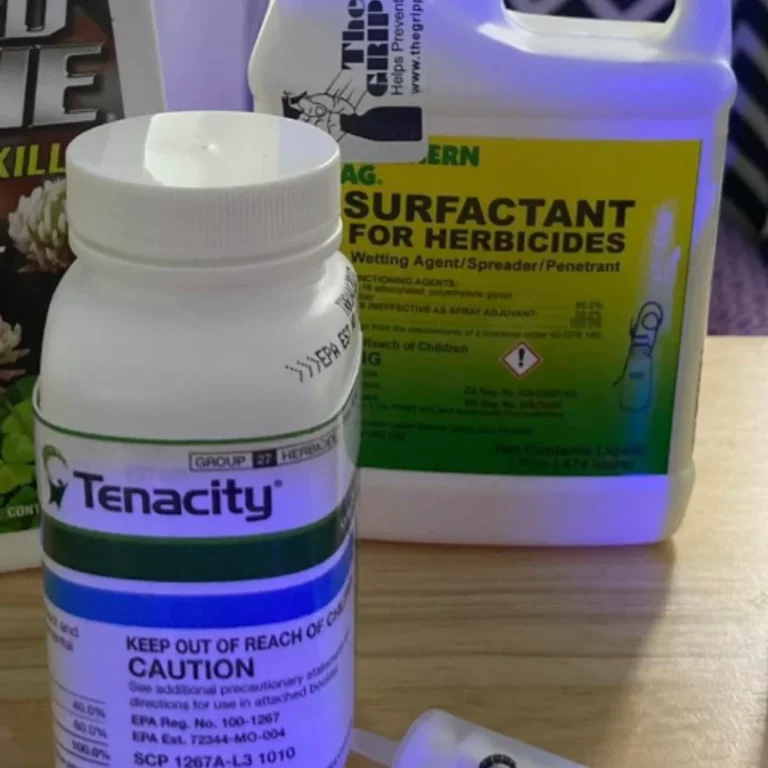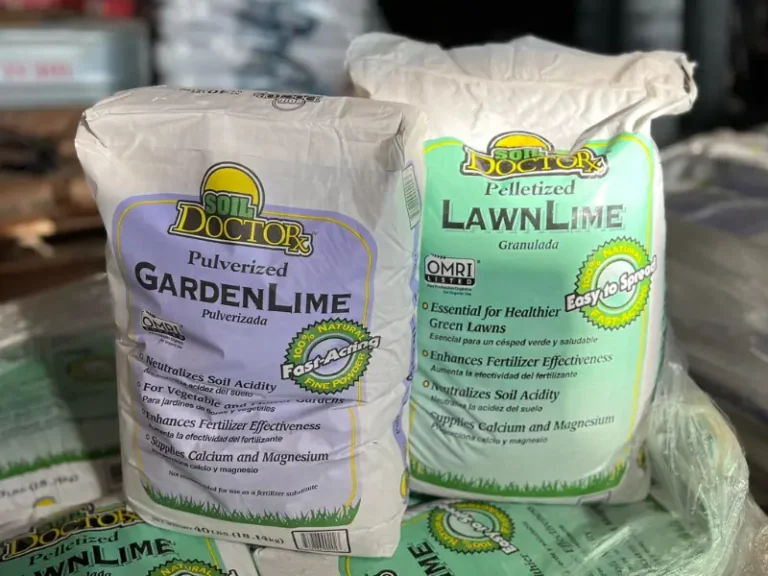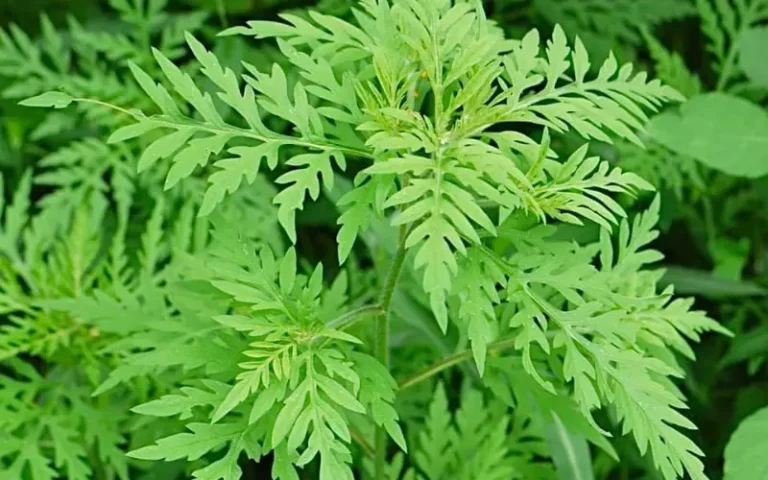How to Get Rid of Nutsedge Naturally (Without Chemicals)
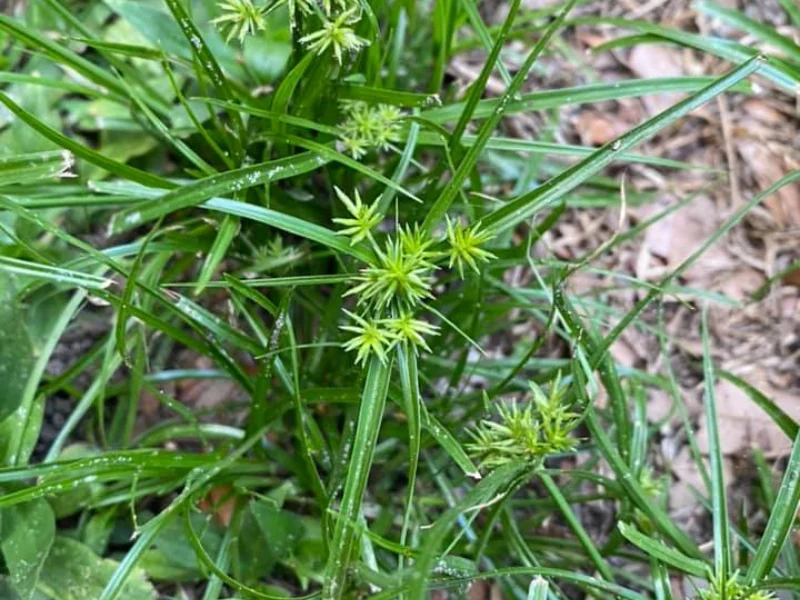
Nutsedge (cypress rotundas) can invade and threaten the health and aesthetic look of your hard-earned lawn or garden. Their rapid growth can take over every inch of your yard. While you may initially turn to herbicides to help save your yard, the associated high costs and potential harm to soil microorganisms may make you think otherwise.
Fortunately, there are natural killer remedies hidden among your household items that provide effective pocket and eco-friendly alternatives to kill nutgrass. They best work on nutsedge during early spring when the sedge is still young and has yet to seed. Let’s explore these natural nutgrass killer remedies.
1. Sugar
Using sugar to kill nutsedge might sound like an impossible solution, but it can help you kill nutsedge in your lawn or garden. Nutsedge requires great amounts of nitrogen to survive, and sugar uses this trait as a weakness to kill it.
Sugar, being a carbon nutrient without nitrogen content, can limit nutrient absorption. When you apply sugar to nutsedge, it prevents the weed from taking in nitrogen from the soil. This nutrient deprivation eventually leads to stunted nutgrass growth, eventually killing it.
Here’s a step-by-step procedure for using sugar to eliminate nutsedge:
- Apply the sugar treatment during dry temperatures of the day, avoiding the morning hours when there is dew on the grass.
- If you are dealing with a fully infested area, apply approximately five pounds of sugar per square foot of the entire area. However, if the nutsedge is growing among other grass or plants in your lawn or garden, only focus on sprinkling the sugar around the base of the nutsedge plants.
- After applying the sugar, lightly sprinkle water over the area to dampen the sugar. Be cautious not to wash it all off, as the water helps the sugar penetrate the nutsedge and work on it.
- Keep an eye on the treated area for about 14 days. If you do not observe any significant changes in the nutsedge, such as wilting or yellowing, reapply the sugar treatment.
CAUTION: Target the nutsedge plants and avoid sugar contact with desirable plants. Additionally, excessive use of sugar may attract pests or create other imbalances in the soil.
2. Vinegar (acetic acid)
Vinegar, when combined with dish soap, can be used to kill nutgrass. However, it is not highly recommended due to the potential damage it can cause to the surrounding lawn or plants since it is non-selective.
As a result, this method is most suitable for areas where nutgrass is growing without any desirable plants or grass nearby.
Use vinegar with a 15% or higher concentration for the best result. Vinegar contains acetic acid, which will burn through the nutsedge leaf surface’s wax coating. This process effectively destroys the leaves by causing dehydration within the plant’s tissue, leading to its death.
Here is how you can use vinegar to kill nutsedge:
- Wear protective clothing while handling vinegar since it can cause severe burns, eye and skin irritation.
- Pour one gallon of white vinegar into a bucket, then add two teaspoons of liquid soap to the vinegar. The soap helps the mixture adhere to the leaves of the nutsedge.
- Thoroughly mix the vinegar and soap solution, ensuring they are well combined.
- Transfer the mixture into a pump or bottle sprayer for easy application.
- Choose a sunny morning to spray the weeds. The sunlight will aid in drying the vinegar quickly on the nutsedge.
- Spray the entire plant to ensure the vinegar comes into contact with all parts of the nutsedge.
Based on my observation, I found that spraying vinegar directly on nutsedge yields fast results. Within a few hours, the weed begins to wither and turn brown. And within 24 hours, the nutsedge starts to die off. This makes it a fast and effective natural solution for killing nutsedge.
Using vinegar to kill nutsedge only affects the exposed parts of the plants, such as the leaves, stem, and flower heads. However, the root system will remain unharmed. To ensure the complete removal, uproot the entire nutsedge three days after they have died.
Precaution for using vinegar to kill nutsedge:
- Avoid spraying vinegar on rainy days since the rain will wash it all away.
- Avoid spraying vinegar on metal surfaces like lawn furniture or fences.
- Do not use a spray pump with reactive metal surfaces.
- Spray the vinegar specifically on the nutsedge plants.
Pro tip: Vinegar’s effectiveness as a herbicide varies depending on the weed type. It works well on small annual weeds like foxtail, crabgrass, or ragweed, but larger annual weeds may need multiple applications. However, it rarely completely eradicates perennial weeds like ground ivy but instead burns their leaves.
3. Landscape fabric (weed barrier)
Landscape fabric is a highly effective weed barrier that can be applied in vegetable gardens, lawns, and flower beds, to control and prevent nutsedge growth.
I recommend using landscape fabrics made from polypropylene polymers to suppress nutsedge. These fabrics not only inhibit nutsedge growth but also allow water, air, and nutrients to penetrate through to the soil, unlike landscape fabrics made of polythene that are impermeable and will allow nutsedge to pass through using the sharp ends on their leaves.
To make the process easier, ensure you have assistance from a friend to help you carry and spread the landscape fabric.
Follow these steps to install the landscape fabric:
- Clear the area by removing any stones, sticks, or pieces of wood present on the ground. These objects might create holes in the fabric, compromising the entire process.
- Lay the fabric on the ground, ensuring it covers the entire area entirely, and press it firmly to the ground to remove any air pockets.
- If you have plants you want to keep in the area where you’ve laid the landscape fabric, you’ll need to cut holes in it for them. Use garden scissors to make a small opening around the stem of each plant.
- Then secure teh landscape fabric properly to keep it firm from moving or being blown away by the wind. Use landscaping fabric staples to secure it firmly on the ground.
- Then regularly maintain and inspect the area to ensure the fabric remains intact.
One of the best landscaping fabrics that do well is the HOOPLE Premium Pro Garden Weed Barrier, which is three times thicker than the other ordinary landscape fabrics. It is also made of durable, heavy-duty material that lasts several years.

4. Dish soap
Dish soap is not just perfect for cleaning utensils and other items; you can also use it with vinegar to kill nutsedge effectively.
The dish soap acts as a surfactant or sticking agent, allowing the vinegar to adhere to the nutsedge leaves and stems. This extended contact time enhances the effectiveness of the vinegar in targeting and eliminating the nutsedge plants.
Pro tip: Use vinegar with 15% or higher concentration of acetic acid and dish soap that is not antibacterial. Additionally, wear safety gloves and glasses while handling vinegar.
Procedure:
- Mix vinegar and dish soap in a sprayer or spray bottle. Use a ratio of 1 gallon of vinegar to 2 tablespoons of dish soap.
- Shake the mixture well.
- Spray the vinegar and dish soap solution directly onto the nutsedge plants, targeting the leaves and stems.
- Allow the solution to remain on the nutsedge for several hours, preferably overnight, before it rains or you irrigate the area.
- After one day, check the treated areas to observe the effects on the nutsedge. You should notice signs of withering, browning, and wilting on the nutsedge foliage.
- Then after about three days, carefully uproot the dead nutsedge, ensuring you uproot the whole plant.
- Then regularly monitor the treated areas and repeat the application for any remaining nutsedge or newly emerged plants if necessary.
This method may only partially eliminate nutsedge, especially in larger or more persistent infestations. It may require repeat application to do the work ultimately. Additionally, avoid spraying the solution on desirable plants or grass, as it can cause damage.
5. Lemon juice
Citrus oil from lemon juice has herbicidal properties that can kill nutsedge. When combined with vinegar, its effectiveness is further enhanced.
Lemon juice has a high concentration of citric acid, which burns the nutsedge foliage causing it to wither and eventually die when applied directly. Conversely, vinegar contains acetic acid, which acts as a desiccant for weeds, causing them to wither and die. This natural combination is effective against nutsedge.
Here is how you can use lemon juice to kill nutsedge:
- In a container, mix one part lemon juice with two parts vinegar. This combination will enhance the herbicidal properties of lemon juice.
- Select a day when the weather is hot and dry. The heat and lack of moisture will help maximize the mixture’s effectiveness.
- Place the mixture in a spray bottle or garden sprayer.
- Then spray the mixture directly onto the nutsedge plants. Ensure that the solution thoroughly coats the leaves and stems.
- After applying the mixture, give it some time to work. The lemon juice and vinegar will gradually penetrate the nutsedge plants, causing them to wither and die.
- Once the nutsedge plants have died off, uproot and dispose of them properly. This will prevent any re-infestation or the seed spreading.
CAUTION: Be careful not to accidentally spray any flowers or your lawn with the lemon juice solution since it might kill them.
6. Hydrogen peroxide
The hydrogen peroxide you use to disinfect your house appliances also kills nutsedge. Its contents disrupt the nutsedge’s cellular structure, inhibiting its growth and causing it to die.
Hydrogen peroxide will destroy everything it touches. Therefore ensure it only comes into contact with the nutsedge you want to eliminate.
You will need the following to create a nutgrass killer using hydrogen peroxide:
- One ounce of hydrogen peroxide (3% concentration)
- One quart of water to act as a diluting agent ensures that the hydrogen peroxide is spread evenly across the weeds.
- A spray bottle
Procedure:
- Take the spray bottle and carefully pour in one ounce of hydrogen peroxide.
- Next, add one quart of water to the bottle.
- Tighten the spray bottle’s cap and vigorously shake the mixture.
- Then spray the base of the nutsedge plants being careful not to spray your lawn grass or other plants in the garden. If it is a full infestation, spray the whole area with the mixture.
- After about half an hour, rinse the treated area with water. This is to wash away any residual hydroperoxide mix so that it does not affect surrounding plants or soil.
- Then wait for about a day or two and uproot the dead nutsedge.
CAUTION: Hydrogen peroxide can cause skin and eye irritation. Therefore, wear protective gloves and goggles while preparing and applying the mixture.

7. Fix wet and compact soil areas in your lawn
Poor soil that holds water for a long time is the main cause of nutsedge in your lawn or garden. When the soil retains water excessively, it creates a favorable environment for nutsedge to thrive. The excessive moisture allows nutsedge to thrive and overthrow the area.
If your lawn has drainage problems and water accumulates for long periods, find a landscaping professional to install drain pipes to redirect the water from your yard.
Additionally, it is beneficial to aerate your lawn annually, ideally during the growing season. Aeration will reduce soil compaction, and water will be able to penetrate the soil, improving its drainage capabilities and reducing the habitat that favors nutsedge growth.
Addressing these underlying drainage issues and compact soil in your lawn or garden will help make the conditions unfavorable for nutsedge growth.

8. Hot, boiling water
Another simple and homemade nutgrass weed killer is plain hot, boiling water. The primary objective of this method is to subject the underground roots and tubers to high temperatures that will burn them.
It works best for new plants that have recently sprouted.
Here is how you can use it:
- Fill a kettle or a large pot with water and place it on the stove or heat source. Heat the water until it reaches boiling point.
- Then, firmly grip the pot then carry it to the nutsedge-infested area slowly and steadily.
- Then pour the boiling water evenly over the nutsedge plants to cover the area. Don’t splash or spill the boiling water onto desirable plants or grass nearby.
- Then Keep a close eye on the treated area to monitor the effectiveness of the boiling water treatment. If any nutsedge plants persist or new ones emerge, repeat the process to achieve complete eradication.
9. Make your lawn thicker
Promoting healthy grass is one of the most practical DIY methods for nutsedge control and prevention.
Encouraging a thick and dense lawn through regular fertilization encourages a competition that outshines nutsedge growth. Also, overseeding increases the density of your turf. This process will help to crowd out nutsedge weeds and discourage their growth.
Additionally, cutting your grass too short leaves it vulnerable to invasive weeds such as nutsedge, so it’s crucial to adjust the height of your lawn mower. Aim for a grass length of around two to three and a half inches tall, ensuring you mow it before the nutsedge tubers have a chance to spread their seeds.
The tall lawn grass will also create a natural sunblock, shading out nutgrass and preventing its growth.

10. Cornmeal and Epsom salt
Here is how these two substances work to kill and prevent nutsedge.
Cornmeal acts as a natural pre-emergent herbicide. Cornmeal contains corn gluten meal, which inhibits the formation of roots in newly germinating seeds. When applied to the soil, cornmeal creates an inhospitable environment for nutsedge, interfering with their root development.
Epsom salt, on the other hand, scientifically known as magnesium sulfate, plays a role in inhibiting the growth of nutsedge by depriving it of essential nutrients.
The magnesium component in Epsom salt interferes with the uptake and utilization of nutrients by nutsedge plants, making them weak and eventually killing them.
Here is what you will need:
- Cornmeal (preferably whole-grain or corn gluten meal)
- Epsom salt (magnesium sulfate)
- Sprayer
- Protective gloves
Procedure:
- Wear protective gloves, then combine equal parts of cornmeal and Epsom salt in a container. For example, if you use one cup of cornmeal, add one cup of Epsom salt.
- Place the mixture in a sprayer, then mix the ingredients thoroughly.
- Then spray the mixture on the nutsedge plants carefully to not spray your grass lawn or plants in your garden.
- After applying the mixture, lightly water the treated area. This will activate the cornmeal and Epsom salt, allowing them to penetrate the soil and target the nutsedge.
- Repeat the application of the cornmeal and Epsom salt mixture every four to six weeks until all the nutsedge in the area dies.
Protip: While cornmeal and Epsom salt can effectively suppress nutsedge, It may require repeated applications for complete eradication. Also, avoid spraying the mixture onto desirable plants or grass, as it may affect their growth.

